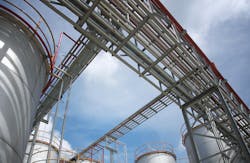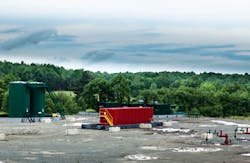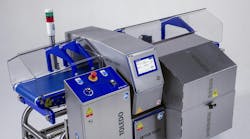In the next phase, growing numbers will become aware that shale gas, used as both feedstock and fuel, gives the North American petrochemical industry a big advantage. Cable news and business sections will point out that new found quantities of ethane, which comes out of the ground along with the natural gas, are causing corporations and local governments to engage together in groundbreaking and ribbon-cutting ceremonies.
“Large volumes of ethane obtained as a by-product in shale gas production have changed the cost position of North American cracker operators from an inferior rank to the second best, topped only by operators in the Middle East,” says Prof. Rainer Dierks, president of the petrochemicals division of industry giant BASF, in an online interview conducted at ACHEMA 2012.
Energy has always been a volatile commodity. Put in motion by this dramatic shift in natural gas supply, idled plants are being restarted in North America, and units are being converted from naphtha to ethane use as cracker feedstock. Expanded capacity for production of ethylene, based on ethane and a core petrochemical feedstock, has been announced, as well as considerable expansion in downstream capacity for products like polyethylene and ethylene glycol.
Further, “this shift to lighter feedstocks causes a different product output pattern in steam crackers,” Dierks says. “Using a large portion of ethane as cracker feedstock allows production of nearly exclusively ethylene. Typical by-products of naphtha crackers, like propylene or butadiene, are produced in only small amounts in these ethane-based crackers.”
The result, Dierks goes on to say, is a significant increase in propylene and butadiene prices, leading to investments in “on-purpose” propylene production.
Unfolding implications
But why is natural gas proving such a big advantage for North America? After all, there are huge shale deposits outside the U.S. While global companies and overseas governments are eager to drill, a Dec. 3 article in The Wall Street Journal suggests, significant delays are being caused by “governmental ownership of mineral rights, environmental concerns and a lack of infrastructure to drill and transport gas and oil.”
It’s also the case that less is known about the geology in most foreign countries than in the U.S. North America’s infrastructure includes a transportation pipeline network already in place and the ready availability of drilling rigs. What it all means, experts say, is that significant overseas shale energy production could be a decade away.
Other reasons why a more general U.S. manufacturing renaissance, encompassing both process and discrete manufacturing industries, may be imminent, are evoked in a June report by Accenture consultants Paul Bjachek and Larry Oglesby, which notes, “The U.S. has a top-notch supply base, one well accustomed to delivering world-class quality levels on time and at agreed-upon prices.”
The consultants say U.S. ethylene production could increase by as much as 30% by 2017, and categorically state, “Based on the current trajectory of low and stable gas prices, the U.S. chemical industry is once again globally competitive.”
Natural gas accounts for between 24% and 30% of total energy consumption in North America. In India and China it is only 7% and 3% respectively.
Of course, besides being a feedstock, natural gas is also a fuel and it makes up about three-quarters of the energy used by the chemical industry in the U.S., excluding pharmaceuticals, Accenture says. Overall, aside from the energy industry itself, chemical production has by far the highest energy intensity of all other industries.
Natural gas prices used to rise and fall with those for oil and naphtha, but the last several years their prices have diverged. One reason is difficulties in transporting natural gas, making it less expensive the closer to the source the buyer is. A similar split is occurring downstream as chemical companies that make greatest use of natural gas find a competitive advantage, while other chemical industries still dependent on high-priced oil struggle with high energy costs and lumpy demand.
Still further downstream, the chemical industry is said to “touch” 90% of manufactured goods, making goods makers the largest consumers of chemical products. The result, say Accenture’s Bjacek and Oglesby, is that “executives in a number of high-value-added industries, such as chemicals and automobile production, are seeing compelling reasons to make products in [North America] again that trump trying to capture low labor costs.”
Coin’s other side
The chemical industry has been growing for the last five decades, according to Zacks Equity Research, most especially production of synthetic polymers used as plastics, fibers and elastomers. The industry also had a strong recovery from the 2008 recession.
As this issue of Processing magazine goes to press, the Dow Chemical Co., which has announced its own $4 billion investment plan in petrochemical plants in Texas and Louisiana, has calculated the total value of announcements in shale related investments at $90-billion plus, says the Financial Times.
Reports indicate that the price of ethane has fallen in the U.S. from about 80 cents per gallon at the start of the year to less than 23 cents a day.
Further, since the start of 2010, industrial production is up 12% in the U.S., while it has fallen 2% in China.
Yet apart from the high hopes and significant investment engendered by the natural gas boom, and the potential for North America to take market share away from other global regions, the U.S. chemicals industry is projected to experience only moderate growth the next several years, according to the American Chemistry Council (ACC).
It is a $720 billion industry that contributes 26% of U.S. gross domestic product, with output expected to rise about 2% in 2013. Earlier this year, the ACC said the immediate prospect is for slow growth with improvements in investment spending and residential investment as bright spots. Capital spending in the business of chemistry will reach $35.5 billion in 2012, rising to $51.5 billion in 2017, while longer term the industry will continue to grow faster than U.S. GDP, based on increasing exports.




